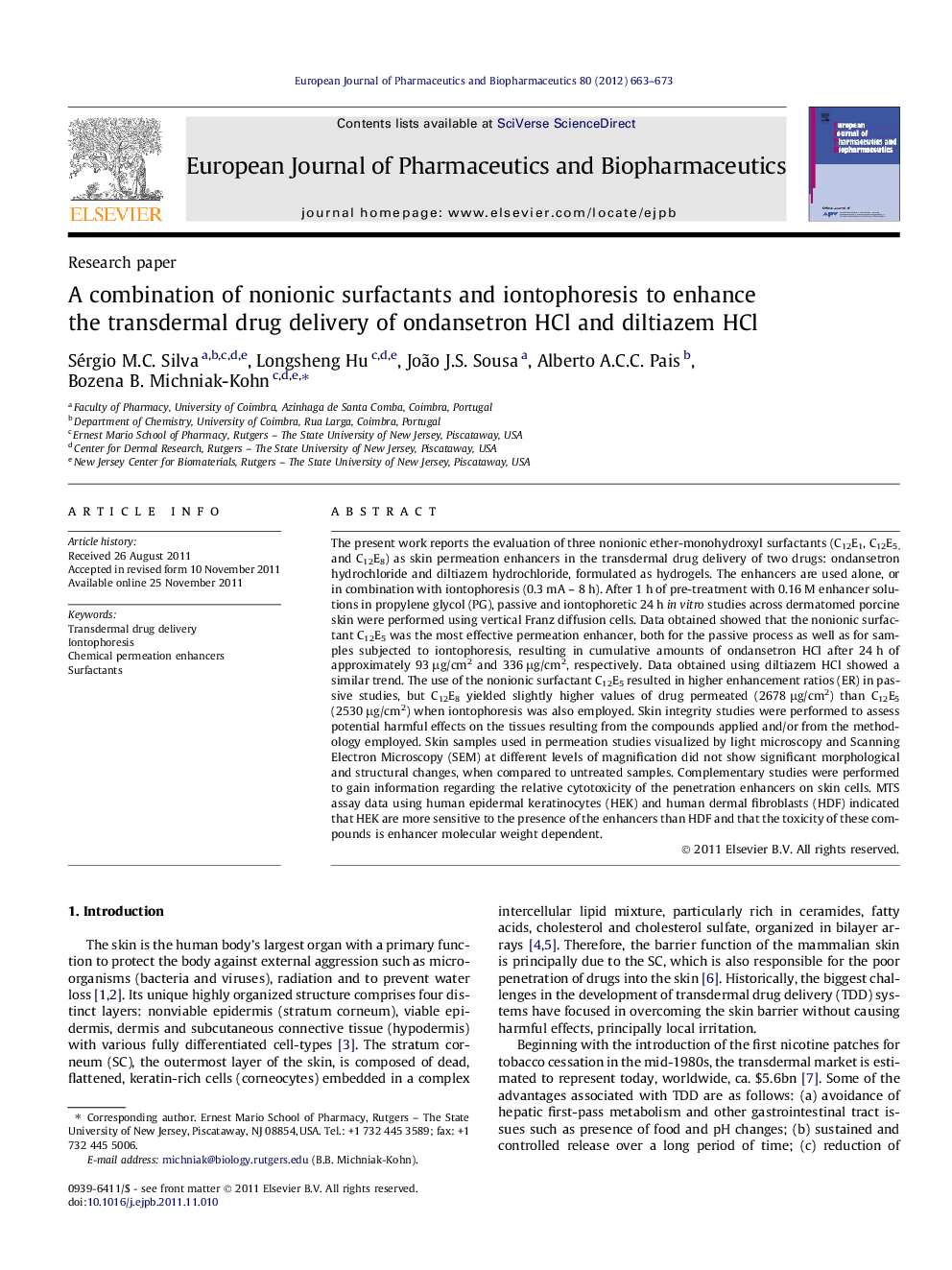| کد مقاله | کد نشریه | سال انتشار | مقاله انگلیسی | نسخه تمام متن |
|---|---|---|---|---|
| 2083896 | 1545362 | 2012 | 11 صفحه PDF | دانلود رایگان |

The present work reports the evaluation of three nonionic ether-monohydroxyl surfactants (C12E1, C12E5, and C12E8) as skin permeation enhancers in the transdermal drug delivery of two drugs: ondansetron hydrochloride and diltiazem hydrochloride, formulated as hydrogels. The enhancers are used alone, or in combination with iontophoresis (0.3 mA – 8 h). After 1 h of pre-treatment with 0.16 M enhancer solutions in propylene glycol (PG), passive and iontophoretic 24 h in vitro studies across dermatomed porcine skin were performed using vertical Franz diffusion cells. Data obtained showed that the nonionic surfactant C12E5 was the most effective permeation enhancer, both for the passive process as well as for samples subjected to iontophoresis, resulting in cumulative amounts of ondansetron HCl after 24 h of approximately 93 μg/cm2 and 336 μg/cm2, respectively. Data obtained using diltiazem HCl showed a similar trend. The use of the nonionic surfactant C12E5 resulted in higher enhancement ratios (ER) in passive studies, but C12E8 yielded slightly higher values of drug permeated (2678 μg/cm2) than C12E5 (2530 μg/cm2) when iontophoresis was also employed. Skin integrity studies were performed to assess potential harmful effects on the tissues resulting from the compounds applied and/or from the methodology employed. Skin samples used in permeation studies visualized by light microscopy and Scanning Electron Microscopy (SEM) at different levels of magnification did not show significant morphological and structural changes, when compared to untreated samples. Complementary studies were performed to gain information regarding the relative cytotoxicity of the penetration enhancers on skin cells. MTS assay data using human epidermal keratinocytes (HEK) and human dermal fibroblasts (HDF) indicated that HEK are more sensitive to the presence of the enhancers than HDF and that the toxicity of these compounds is enhancer molecular weight dependent.
The use of nonionic ether-monohydroxyl surfactants as permeation enhancers in conjunction with iontophoresis caused an approximately 400-fold and 200-fold increase on the permeation of ondansetron HCl and diltiazem HCl respectively, without major impact upon the skin structure.Figure optionsDownload high-quality image (96 K)Download as PowerPoint slide
Journal: European Journal of Pharmaceutics and Biopharmaceutics - Volume 80, Issue 3, April 2012, Pages 663–673